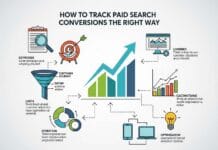Being in debt can feel overwhelming and exhausting. With multiple payments, due dates and interest rates to keep track of, debt can be as much of a logistical challenge as a financial one. One way to make it easier to manage is with a debt consolidation loan.
A debt consolidation loan is a type of personal loan that allows you to combine multiple existing debts into one monthly payment and potentially a lower interest rate.
Consolidating debt can make it easier to pay off, but only if you have a solid repayment plan it place. It’s crucial that you budget for your loan payment every month so you can avoid late penalties or damage to your credit score. These tips may help you budget better to stay on track to meeting your financial goals.
1. Build a Budget
The first step to budgeting is tracking your income and expenses so you know how much is coming in and going out each month. Look at your bank or credit card statements from the past few months and record all of your expenses in a spreadsheet or a budgeting app — whichever is more convenient.
You can itemize each expense by specific categories like rent, groceries, fitness and entertainment, or divide them more generally into needs, wants and savings. When you have all your spending laid out before you, it’s easier to change your habits or create or adjust savings goals.
Everyone has different budgeting strategies, but a popular one is the 50/30/20 method. This budget says you should use 50% of your take-home pay (after taxes) on necessities, 30% towards wants and 20% towards savings.
If you already have a budget, you can update it to include your debt consolidation loan monthly payment. Put it in the “needs” bucket to ensure you’re always prepared to pay it each month.
2. Use a Budgeting App
A budgeting app can be a great alternative if maintaining a spreadsheet is too challenging. You can typically link to your bank accounts and automate tracking your incomes and expenses with most budgeting tools.
You can also track your progress towards specific goals, like paying down a debt consolidation loan or saving up for a new car. Of course, you can track your progress yourself, of course, but an app can reduce some of the mental load and make it easier to stay on track.
3. Automate Your Loan Payment (and Savings)
In most cases, your debt consolidation loan will have a fixed interest rate, meaning your monthly payment stays the same every month. That also makes it easier to set up automatic payments to ensure you’re never late.
You can also take the automation a step further by setting up a bank account dedicated to paying off the loan and scheduling automatic transfers from your regular checking account ahead of your payment due date. Before you choose an account, make sure the bank doesn’t have a minimum balance requirement or fees that will impact your budget.
Keep your account funded with automatic transfers each time you get paid and use the automatic payment option to create a well-oiled machine for on-time payments. By setting up a separate account dedicated to paying your monthly bills and debts, you might reduce the temptation to spend that money.
4. Consider Budgeting for Early Payments
The faster you can pay down a debt consolidation loan, the less interest you will pay in the long run. If you get a raise, start a side hustle or cut enough spending so that you have some additional financial flexibility, consider paying a little more than the monthly loan payment each month.
Some lenders may charge a prepayment penalty, which is a fee for paying off a loan before the term is up, so it’s important to make sure the fee won’t cancel the savings you would get from paying off your loan early. Before you make an extra payment, check with your lender to make sure they go toward the loan principal (original amount borrowed), not interest (cost of borrowing).
If the math works out in your favor and your lender doesn’t charge any fees for paying off your loan early, you could save some money in the long run.
5. Use Your Debit Card More
Credit cards can be great resources to support flexible spending and earn rewards, but they’re risky when you’re trying to pay off debt. Credit cards usually have high interest rates and if you can’t pay the monthly statement in full each month, those interest charges add up, making it more difficult to meet other financial obligations.
Your debit card is linked to your checking account, so you can only spend the money you already have, not money you’ll have to pay back. Using your debit card rather than your credit card for everyday purchases can make it easier to track your spending and help prevent you from making purchases you can’t afford.
Start Budgeting Your Way Out of Debt
A debt consolidation loan is a powerful tool to help you get out of debt. But consolidating debt is just the start. Building and managing an effective budget will help you stay on track to get out (and stay in control) of your finances.
Notice: Information provided in this article is for information purposes only and does not necessarily reflect the views of globalgurus.org or its employees. Please be sure to consult your financial advisor about your financial circumstances and options. This site may receive compensation from advertisers for links to third-party websites.





